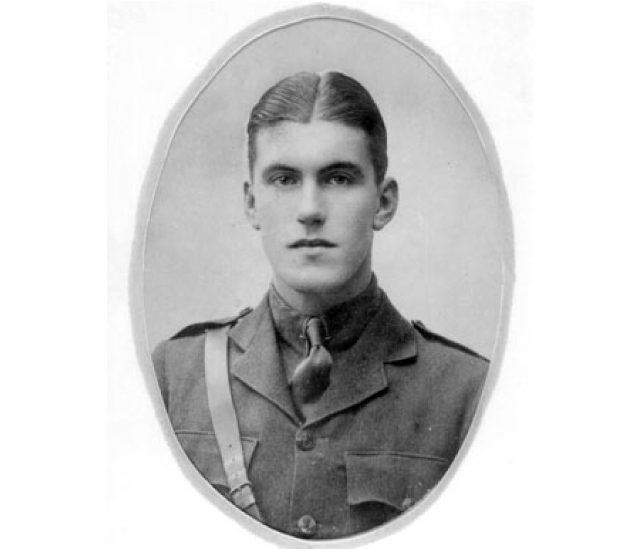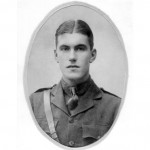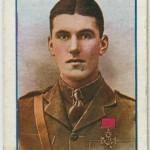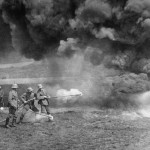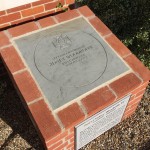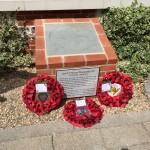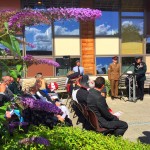Read this article to learn about the soldier Sidney Woodroffe.
Lewes resident Sidney Woodroffe was awarded the Victoria Cross for the heroism on the battlefield that cost him his life. The Victoria Cross is the highest military honour that can be awarded in Britain and is given to those who have shown valour ‘in the face of the enemy’.
Sidney Woodroffe was born in Lewes, East Sussex, on 17 December 1895. He was the fourth and youngest son to his parents, Henry and Clara. Sidney was educated at Marlborough College. He was also a keen sportsman appearing in various school teams for football, cricket and hockey.
Following the completion of his schooling, Sidney was due to study Classics at Cambridge University before the outbreak of war moved him to join the army. He was deployed to France in May 1915.
On 19 July 1915 near Ypres in Belgium, the British army caused an explosion beneath German trenches and captured the village of Hooge. Eleven days later on the 30th July the Germans counterattacked. The fighting that day saw the first use of flamethrowers by German soldiers. These new weapons were terrifying and German soldiers swiftly captured sections of British trenches.
Woodroffe and his men found themselves surrounded. It was at this moment that Sidney rallied his men and performed acts of ‘conspicuous bravery’ that would see him win the Victoria Cross but also lose his life, as reported later by the London Gazette:
The enemy having broken through the centre of our front trenches, consequent on the use of burning liquids, this Officer’s position was heavily attacked with bombs from the flank and subsequently from the rear, but he managed to defend his post until all his bombs were exhausted, and then skilfully withdrew his remaining men. This very gallant Officer immediately led his party forward in a counter-attack under an intense rifle and machine-gun fire, and was killed whilst in the act of cutting the wire obstacles in the open. .- London Gazette 3 September 1915
Despite Sidney’s sacrifice the German offensive proved to be successful and they recaptured the village.
One of Sidney’s school friends composed a poem in his memory upon learning of his death:
There is no fitter end than this.
No need is now to yearn nor sigh.
We know the glory that is his,
A glory that can never die.
Surely we knew it long before,
Knew all along that he was made
For a swift radiant morning, for
A sacrificing swift night-shade.
Two of Sidney’s three brothers also served in the British Army during the war. Kenneth Woodroffe was killed in May 1915, whilst Leslie Woodroffe was badly wounded at Hooge in the same battle that claimed Sidney’s life. Leslie returned to action in 1916 but was subsequently badly wounded a few days later. Leslie Woodroffe died on 4 June 1916, therefore meaning that all three Woodroffe brothers who had gone to war would not return home.
2nd Lieutenant Sidney Woodroffe’s body was never recovered and he is commemorated on the Menin Gate war memorial at Ypres. At the time of his death he was 19 years and 7 months old. His private papers are held by the Imperial War Museum.
Sidney Woodroffe is commemorated on a new war memorial at Lewes Library which was unveiled by Her Majesty’s Lord Lieutenant of East Sussex, Peter Field Esq. at a ceremony on 30 July 2015.
Questions
1) What is a Victoria Cross?
2) What did Sidney Woodroffe do to earn the VC?
3) What happened to Sidney’s brothers during the war?
Pictures
- Sidney Woodroffe VC
- Sidney Woodroffe VC
- German soldiers practising with a flamethrower, 1917. – Courtesy of the Imperial War Museum © IWM (Q 48856)
- Sidney Woodroffe VC – Commemorative Paving Stone Ceremony
- Sidney Woodroffe VC – Commemorative Paving Stone Ceremony
- Sidney Woodroffe VC – Commemorative Paving Stone Ceremony
Click here to download a copy of this resource: First World War – Sidney Woodroffe – students

